Chiswick Timeline of Writers & Books: A Quick Guide
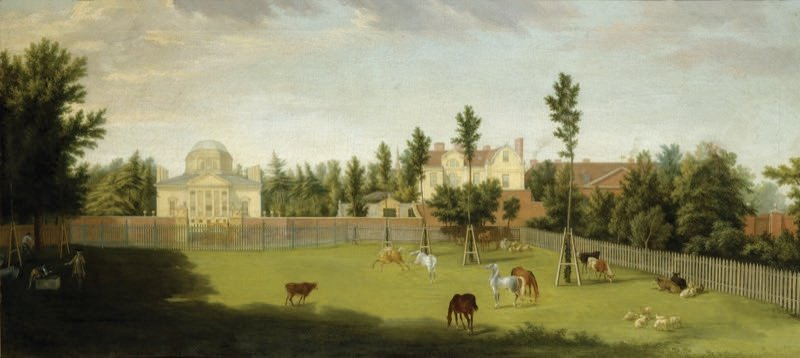
Chiswick’s gardening heritage: a match for those of Chatsworth, Chelsea and Kew
- The Walled Gardens at Chiswick House date back to 1682, when they were created by Sir Stephen Fox. The Kitchen Garden is still in use, supplying fruit and vegetables to the Chiswick House Gardens café and garden visitors; it is open to the public for free from late March onwards, with entry from Thursday to Sunday 10.30am to 3.30pm. It was rescued in 2005 by a group of volunteers led by Karen Liebreich and is now maintained by the Chiswick House gardens team and volunteers. See more below.
- The English Landscape Movement – widely seen as one of the UK’s greatest influences on European art and architecture – was started at Chiswick House in the 1730s by William Kent, for whom Capability Brown later worked as an assistant. Chiswick House also has one of the world’s oldest Camellia collections. See more below.
- Sir Joseph Paxton, one of the great gardeners of the 19th Century, was trained in the Chiswick Garden of the Horticultural Society of London (later the RHS), where John Lindley was an influential figure, later helping save Kew from neglect. The RHS held its first flower show at its garden in Chiswick, the precursor to the world famous Chelsea Flower Show, and Fiona Davison of the RHS says Chiswick trained many gardeners who later ran the “great gardens of England… and the Empire”. See “Chiswick – the epicentre of cutting-edge horticulture” below.
- Bedford Park in Chiswick, built in the 1880s, is widely regarded as the first garden suburb, a prototype for later garden cities and suburbs. As such, it was featured in the 2018 Wellcome Collection exhibition on architecture and health, Living with Buildings (see image 6).
- See more below – plus details of Chiswick’s private gardens, allotments, community gardeners and Flower Market.
See their books: John Lindley Sir Joseph Paxton Karen Liebreich Fiona Davison.
More gardening books by Chiswick writers can be found on the Chiswick Timeline Non-fiction page. These now include Great British Elms, co-authored by David Shreeve, director of the Conservation Foundation, published by RBG Kew and reviewed on The Chiswick Calendar. It is being launched at an event organised by the Chiswick Book Festival and Chiswick Flower Market on October 6th 2024.
Exploring Chiswick
1. Chiswick House – birthplace of the English Landscape Movement
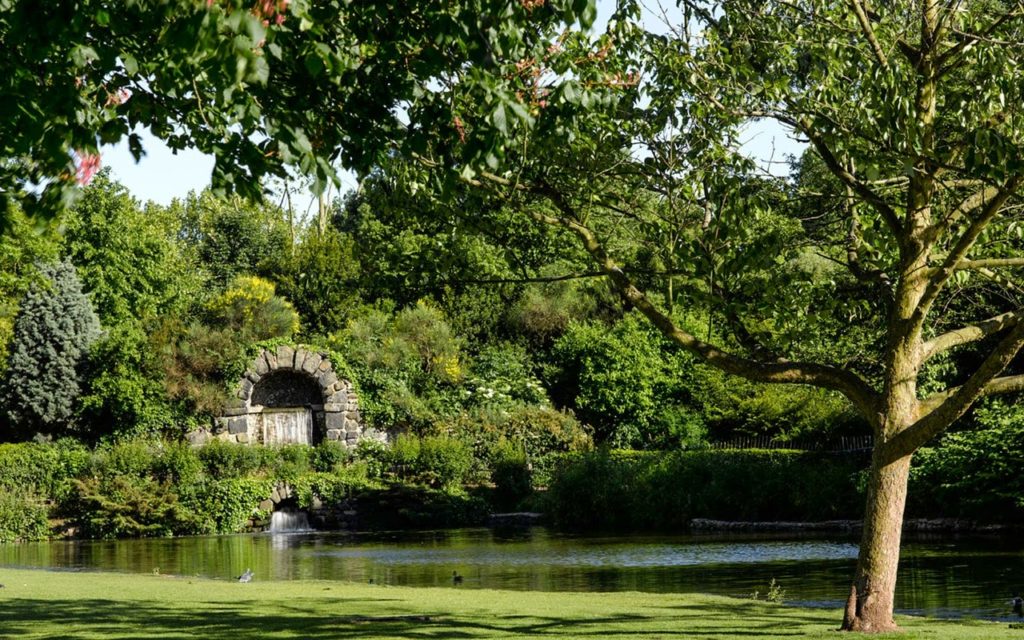
The English Landscape Movement was started at Chiswick House by William Kent. With his mentor, Lord Burlington, Kent broke down the rigid formality of the early 18th century garden to create a revolutionary, natural-looking landscape. Freed from hedges, the gently sloping lawns run down to the serpentine lake with its rustic waterfall. The gardens form a complete and complementary work of art with Chiswick House at their centre. The villa and gardens each enhance the beauty of the other. Planting here went on to influence gardens from Blenheim Palace to New York’s Central Park.
– Read more in Chiswick House and Gardens: A History by Gillian Clegg.
– The picture above shows the Cascade, a waterfall descending a series of rock steps through three arches. Built in 1738, it was probably designed by Kent and was restored in 1996-7 to its former 18th Century splendour, thanks to a major donation.
– The 1740s painting below, Chiswick House from the Cascade Terrace by George Lambert, was bought with help from The Art Fund.
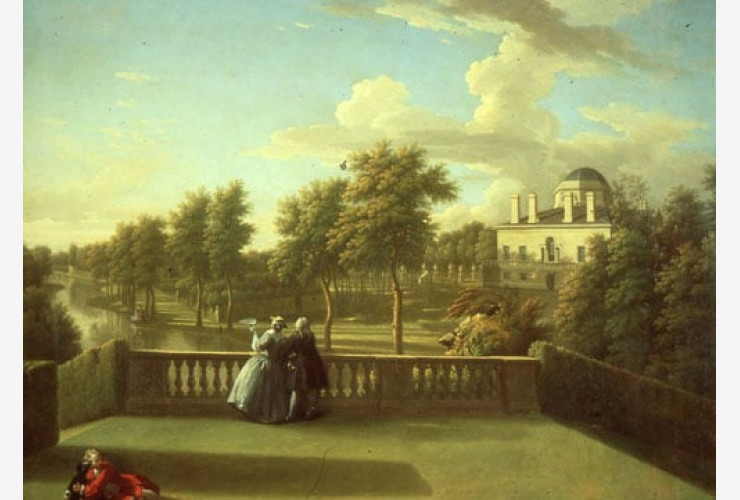
Between 2008 and 2010, the Gardens were further restored with a £7.6m grant from the Heritage Lottery Fund.
–‘Lord Burlington’s Chiswick: The house and garden that changed the world’ – 2007 lecture in New York by Dr Simon Thurley, then director of English Heritage – ChiswickW4.com
– £12m facelift for historic gardens of Chiswick House – the Guardian, June 2010
– Why everything in the garden is lovely again at Chiswick House – The Times, June 2010
2. Kent, Lindley, Paxton and the Royal Horticultural Society
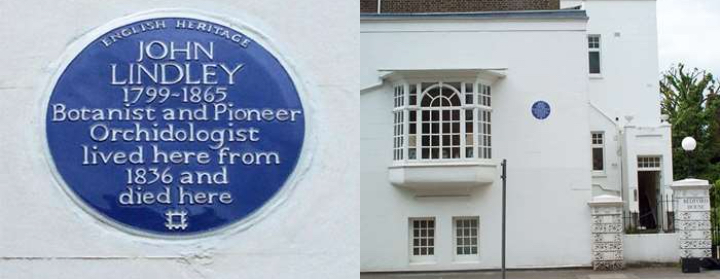
From Gill Clegg’s Chiswick History web pages
WILLIAM KENT
William Kent (1685-1748) was a landscape gardener, an architect, interior designer and a painter. Born in Yorkshire and apprenticed to a coach painter, he was sent to Rome to study painting. Here he met the Earl of Burlington who brought him back to London to help renovate Burlington’s own properties. Kent lived with the Burlingtons for the rest of his life and is said to be buried in the Burlington vault in St Nicholas Church. It is not known exactly how much part Kent played in the design of Chiswick House itself, perhaps just some of the interior decoration, but he had a large hand in landscaping the grounds. According to Horace Walpole, it was Kent who saw that ‘all nature is a garden’ and devised an informal layout for the Chiswick House gardens. Kent is now recognised as the pioneer of the ‘natural taste in gardening’. He became much sought after, commissioned to design many things, particularly Holkham Hall for the Earl of Leicester and the gardens at Stowe and Rousham.
JOHN LINDLEY
Dr John Lindley (1799-1865) was a famous horticulturalist and botanist who was connected with the Horticultural Society’s (later Royal Horticultural Society) Chiswick Gardens for 42 years. He joined as Assistant Secretary in 1822, becoming Secretary in 1858, a post in which he continued until 1863. He was thus very involved in laying out the gardens and supervising the collection of plants. Lindley was also Professor of Botany at University College, London, Professor of Botany at Chelsea Physic Garden and editor of the Gardener’s Chronicle. He lived in Turnham Green Terrace before moving to Melbourne House in 1824. In 1836 he moved next door to Bedford House where he lived until his death. The picture above shows the English Heritage blue plaque at Bedford House, The Avenue W4 2PJ.
JOSEPH PAXTON
Sir Joseph Paxton (1803-1865), one of the greatest gardeners of the 19th century and the man who created the Crystal Palace, was trained in Chiswick. In 1823, aged 20, Paxton joined the Horticultural Society’s (later Royal Horticultural Society) experimental Chiswick gardens as a labourer. This was the heyday of plant collecting and the Horticultural Society’s gardens were considered the most prestigious in Britain, so it was an ideal proving ground for a keen would-be gardener. Paxton is known to have worked in the arboretum and in the ornamental garden and he probably took advantage of the Society’s splendid library to spruce up his gardening knowledge. Paxton encountered the 6th Duke of Devonshire who had his own private gate into the gardens. In 1826 the Duke offered Paxton the position of Superintendent of the garden at Chatsworth, his estate in Derbyshire. Paxton was not yet 23 years-old and over the next three decades he created a garden that became the envy of every aristocrat in the land and made Chatsworth the most visited country house in England. While at Chatsworth, Paxton experimented with large glass buildings using revolutionary technology. This led to the commission to design the Crystal Palace, which is considered one of the greatest design and engineering feats of the 19th century.
Joseph Paxton in Chiswick by Kate Colquhoun, Brentford & Chiswick Local History Journal 12, 2003
ROYAL HORTICULTURAL SOCIETY
The fêtes (forerunners of the Chelsea Flower Show) held at the Horticultural Society’s Chiswick gardens were one of the main events of the London ‘season’. The first fête was held in 1827 and by the 1840s there were three fêtes a year in May, June and July (the last fête in Chiswick was in 1857). Produce from the garden was displayed in a long line of large marquees; refreshments were provided and regimental bands entertained visitors throughout the day. The Horticultural Society (it didn’t receive the Royal Charter until 1861) had its experimental gardens in Chiswick from 1822 to 1904. They occupied the land now covered by Alwyn Avenue, Barrowgate Road, Hadley Gardens and Wavendon Avenue. The Society leased the 33 acres from the Duke of Devonshire of Chiswick House. Half the gardens were allocated to fruit and vegetables; 13 acres to flowers and shrubs and there was an eight-acre arboretum. This was the heyday of plant collecting and hot houses were built for the exotic plants now being brought back from the Far East, the Americas and other places. The Society also ran conferences and a training scheme for young would-be gardeners and this is where Joseph Paxton, later to build the Crystal Palace, was trained. Dr John Lindley, who lived in Chiswick, became Assistant Secretary of the gardens in 1822, and was the Secretary between 1858 and 1863. In 1870 the Royal Horticultural Society reduced its Chiswick acreage to just 11 acres. The glasshouses were demolished and the arboretum swept away. By 1900, with Chiswick becoming built over, the Society was looking for new land. In 1903 the Society was presented with an estate in Wisley, Surrey and moved its experimental gardens there in 1904. The cul-de-sac called Horticultural Place is the only reminder we have of what must have been an oasis in the heart of Chiswick.
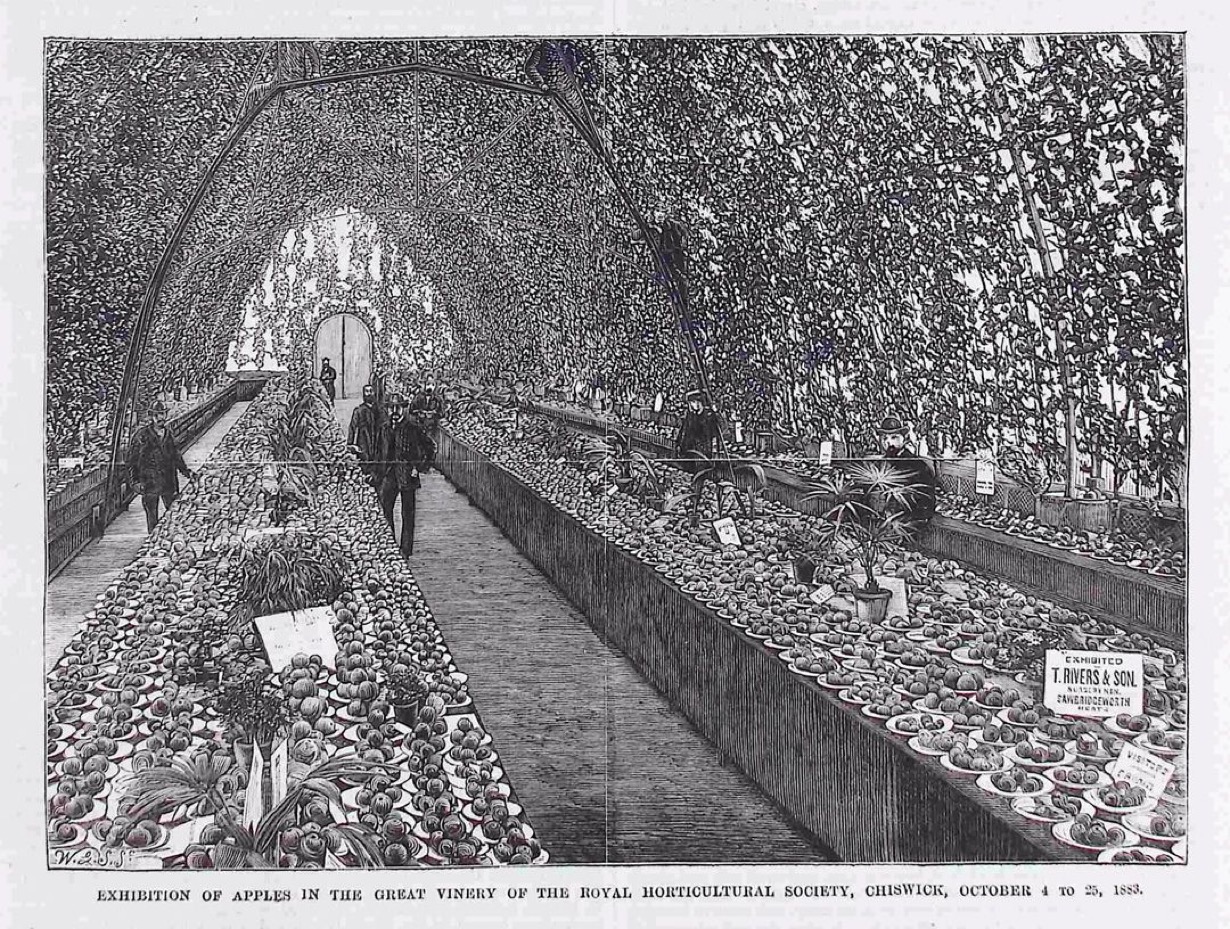
3. Chiswick Garden: “The epicentre of cutting-edge horticulture”
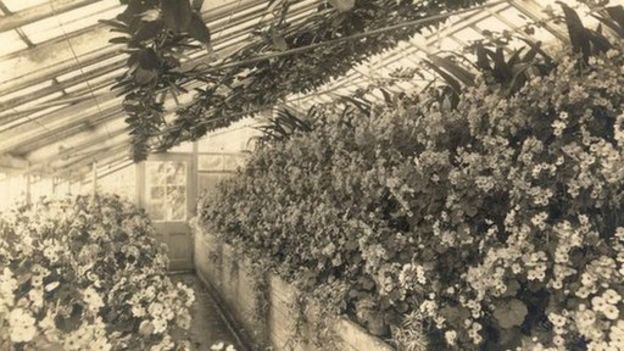
“The Chiswick Garden acted as a magnet to all the best and brightest young gardeners.”
In 2012, whilst working at the Royal Horticultural Society’s Lindley Library, Fiona Davison unearthed a book of handwritten notes that dated back to 1822. The 105 notes, each set out in neat copperplate writing, had been written by young gardeners in support of their application to be received into the Society’s Garden at Chiswick.
Amongst them was an entry from the young Joseph Paxton, who would go on to become one of Britain’s best-known gardeners and architects, transforming the estate at Chatsworth and building the world-famous Crystal Palace. Paxton was far from alone among those Chiswick gardeners in shaping the way we garden today. In her 2019 book, The Hidden Horticulturalists, the RHS head of libraries and exhibitions tells for the first time 32 stories of the young, working-class men who played a central role in the history of British horticulture – and explains the importance of two major Chiswick gardens: the Duke of Devonshire’s garden at Chiswick House and the Chiswick Garden of the Horticultural Society of London, which it leased from the Duke.
“During the negotiations for the lease, the Duke of Devonshire insisted that a private door was installed in the wall separating the Garden from the grounds of Chiswick House, so that he could visit at his leisure” Davison writes. “For one young gardener listed in the Handwriting Book, this doorway was to be the portal to a life of fame and fortune.”
This was Paxton, “unquestionably the most significant figure in British horticulture in the nineteen century” she writes. “He spent just over two years as Chiswick and those years were enormously important to his success.”
Chiswick was “the epicentre of cutting-edge horticulture” Davison writes. “The Chiswick Garden acted as a magnet to all the best and brightest young gardeners. The Society envisaged that, over time, the great gardens of the kingdom, and even the wider Empire, would be staffed with gardeners who had been trained at Chiswick.”
Furthermore, “Chiswick offered unprecedented opportunities to add to the store of (horticultural) knowledge because it was the first place in the kingdom to see newly arrived plants from across the Empire.”
Davison says Paxton bent the rules to get into Chiswick and within a year had been promoted to Under-Gardener in the Arboretum, one of the most prestigious parts of the garden. A year later he was in overall charge of the Arboretum when he met the garden’s landlord and next-door neighbour the Duke of Devonshire.
“The story goes that in 1826 the 36-year-old William George Spencer Cavendish met Joseph Paxton (then aged twenty-three) as the duke let himself into the Society’s Garden through the private door… In the young Joseph Paxton he met someone with a confidence and self-possession that he himself lacked… He was able to answer the duke’s questions with authoritative confidence and, in all probability, an enthusiasm that matched the duke’s own growing fascination with the business of gardening on a grand scale.
“In March 1826 the Duke of Devonshire offered Paxton the position of Superintendent of Gardens at Chatsworth, one of the grandest estates in England… With the backing of such a rich patron, Paxton knew he would be able to take the things he had seen and learnt at Chiswick and try them on a much bigger scale.”
Read the full story in The Hidden Horticulturalists by Fiona Davison. She spoke at the Chiswick Book Festival in September 2019 and, via Zoom, to the Brentford & Chiswick Local History Society in October 2020. Her companion book, An Almost Impossible Thing, is about pioneering women gardeners and she spoke about this at the Chiswick Book Festival in 2023.
Book review by garden historian Val Bott – London Historians’ Blog
Book review in Daily Mail
Who was the mysterious gardener Miss Harrison? – BBC News
4. The Walled Gardens at Chiswick House
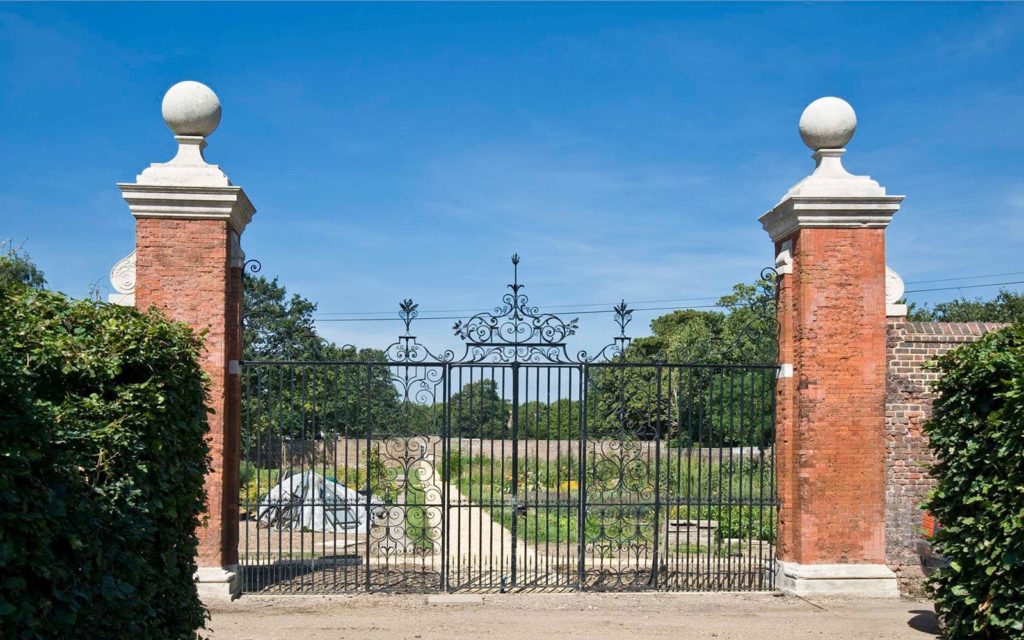
The Walled Gardens at Chiswick House date back to 1682, when they were created by Sir Stephen Fox. The Walled Garden (pictured above and below) was the kitchen garden for Moreton Hall, Fox’s mansion built in 1682-4 next door to Chiswick House. It was incorporated into the Chiswick House estate by the 6th Duke of Devonshire in 1812.
After years of neglect, it was rescued and restored in 2005-10 by a group of volunteers led by Karen Liebreich and was featured on BBC Gardeners’ World. Read more here and see her book based on the experience, The Family Kitchen Garden.
The Kitchen Garden is now maintained by the Chiswick House gardens team and volunteers and is open to the public for free, from Thursday to Sunday 10.30am to 3.30pm, from late March onwards. It supplies fruit and vegetables to the Chiswick House Café and garden visitors – they are for sale every Thursday and Saturday from April to end of October. A second walled garden next to it is the venue for Giffords Circus and other events each summer.
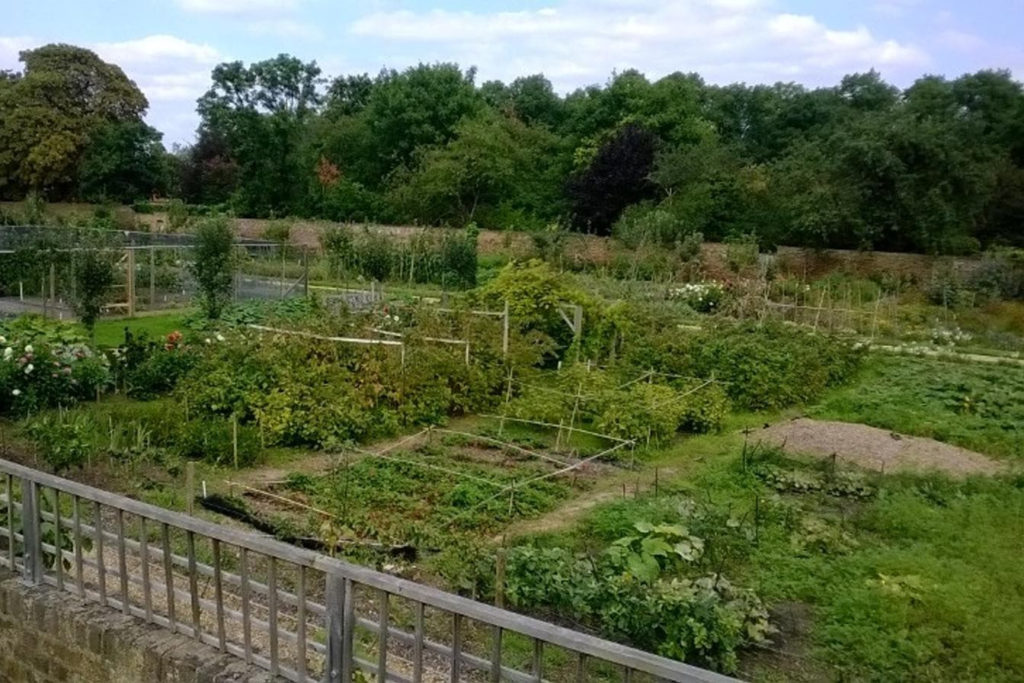
5. Chiswick House Conservatory and Camellia Collection
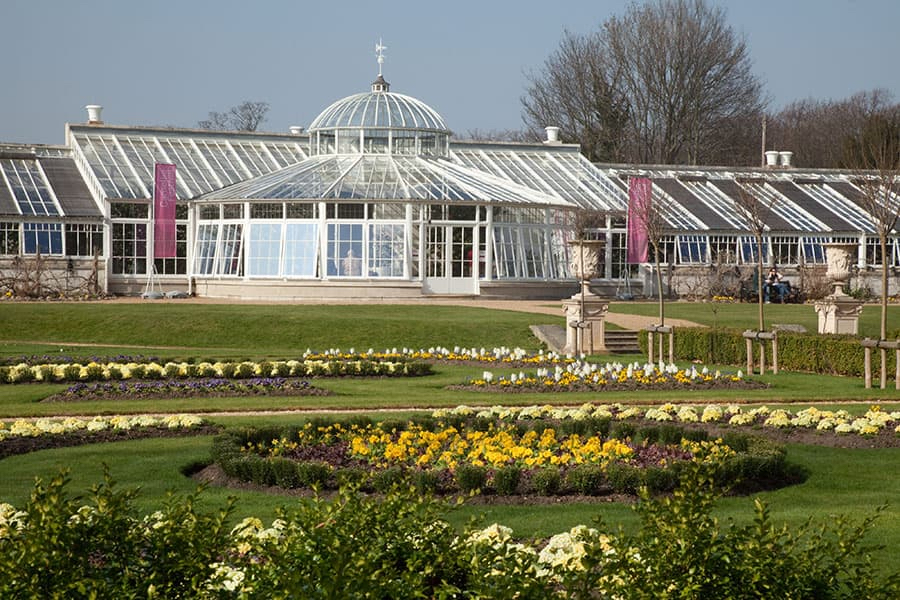
The rare camellias in the Conservatory form one of the oldest collections under glass in the Western world. Brought by ship from China in the 18th century, exotic camellia plants were a luxury commodity. The original collection was created by the 6th Duke of Devonshire and his gardener, William Lindsay. Today, the collection includes 33 different varieties, including examples of many of the earliest varieties introduced to Britain.
The Grade I listed Conservatory was designed by the architect Samuel Ware (who later designed Burlington Arcade, Piccadilly) in 1813. At 300ft long, it was one of the earliest large glass houses to be built and is a forerunner of Decimus Burton’s glass house at Kew and Joseph Paxton’s Crystal Palace. The Conservatory fell into ruin in the late 20th century and the extraordinary plants were in danger of being lost. Three local members of the International Camellia Society stepped in to look after them. They saved the camellias, and paved the way for the major restoration of Chiswick House Gardens and the Conservatory, which was completed in June 2010.
6. Bedford Park, the first garden suburb
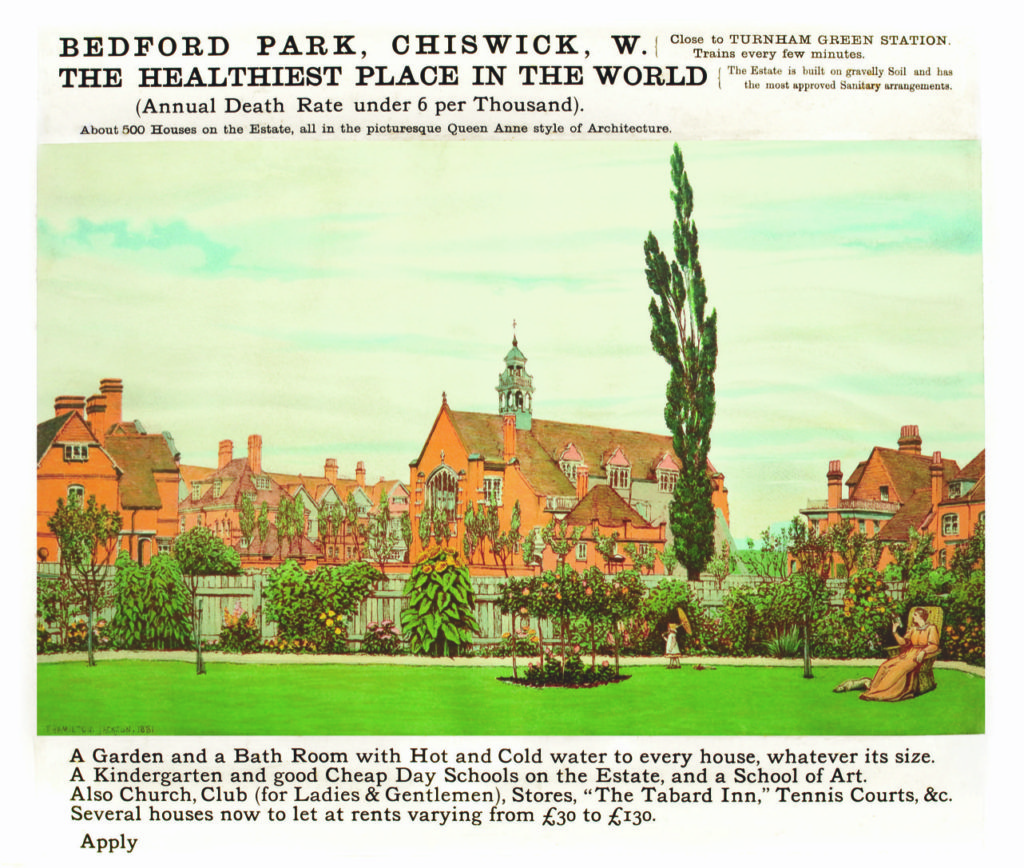
Bedford Park was built in Chiswick in the 1880s and is widely considered to be the first garden suburb, a prototype for later garden cities and suburbs. As such, it was featured in the 2018 Wellcome Collection exhibition on architecture and health, ‘Living with Buildings’ (see ‘Exhibition highlights’, image 6 here). It took its name from Bedford House, where John Lindley had lived. Sir John Betjeman described it in 1960 in the Daily Telegraph as “the most significant suburb built in the last century, probably the most significant in the Western world”. Read Bedford Park: the first garden suburb by Tom Greeves, revised in colour by Peter Murray in 2010, and see ‘Bedford Park Open Gardens’ below.
7. Chiswick’s private gardens, allotments and community gardeners
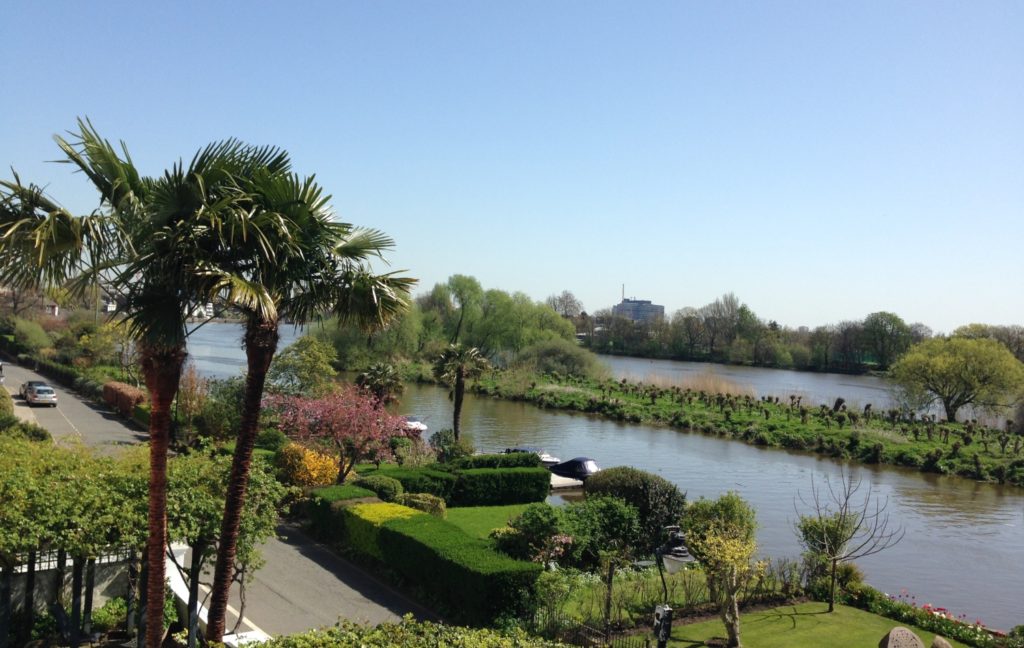
Chiswick is home to many active, knowledgeable and pioneering gardeners who open their gardens and allotments to the public; hold competitions and shows; and encourage community gardening projects. They include:
– Chiswick Horticultural & Allotments Society
The CHAS is a charity which promotes the art, science and practice of horticulture and welcomes new members. Founded in 1915 as the Chiswick Allotment Holders Association, it is based around the Staveley Road allotments, W4, and holds talks, visits, social event and summer and autumn shows. At its trading hut, it sells good value plants and everything needed for successful growing. Another Chiswick first – Grow Chiswick
– Bedford Park Open Gardens
Bedford Park was created as the first garden suburb in the 1880s and was described by Sir John Betjeman as “the most significant suburb built in the last century, probably the most significant in the Western world”. For more than 30 years, as part of the annual Bedford Park Festival, some residents have opened their gardens in June to raise money for the charities supported by St Michael & All Angels Church. In June 2020, the gardens couldn’t be opened to the public because of COVID-19 but 14 gardens were opened virtually in photos and video, raising a substantial sum for charities and the church.
– Chiswick Mall Gardens
Each year in May, five gardens on Chiswick Mall, by the river (photograph above), are open to the public as part of the ‘yellow book’ National Gardens Scheme in aid of charities. They include Swan House, an informal walled garden with herbaceous borders; Field House, a modern water garden with exotic foliage, featured on Gardeners’ World in August 2018; and Longmeadow, an ever-evolving garden aiming for year-round interest.
– Abundance London
A voluntary organisation, founded in 2010 by Karen Liebreich (see Chiswick House Kitchen Garden above), it aims to work with local schools, volunteers, businesses, community groups and local government on environmental and educational projects. It harvests surplus fruit; plants orchards, hedgerows and trees; reconnects people with nature and protects it in an urban setting; and creates beautiful spaces, through planting and art. It has launched a Treasure Trail of these projects.
It also created the Chiswick Timeline: A History in Art & Maps, which inspired this Chiswick Timeline of Writers & Books.
– Chiswick Oasis
Chiswick Oasis is a pioneering project to install a 130-metre Living Wall of plants to help reduce pollution at St Mary’s Catholic Primary School next to the A4, which carries over 80,000 vehicles a day. The aim is to turn it from one of the most polluted schools in the country to one of the greenest, a model for others to follow.
– Blossom Day W4
Staveley Road W4 is blessed with a beautiful avenue of Prunus Kanzan cherry trees. They were planted in 1932; 17 more were planted in 1992. In 2005, a cherry tree was planted in Peenemunde to remember the victims of the first V2 flying bomb, which landed on Staveley Road. In 2019, a group of residents set up Blossom Day W4 to ensure the trees survive and thrive in perpetuity.
– Chiswick Flower Market
In September 2020, a group of local residents and organisations including Abundance London and The Chiswick Calendar launched London’s first new flower market for 150 years. The first event attracted 7,000 people! It has been hailed as a possible model for reviving local high streets: How we helped our local high street bloom again – Telegraph.
Chiswick Timeline Writers Trail
Read more stories via the Writers Tales page.
The Chiswick Timeline of Writers & Books lists almost 500 writers who have written a book and lived in Chiswick W4, or written books about the area. See A Quick Guide.
